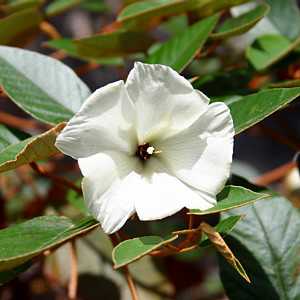
The ‘Blue Book’
The Annual Colonial Report
Man does not live by words alone, despite the fact that sometimes he has to eat them.{a}
⏱ QUICK READ
Originally designed as an annual status report on a possession of The Crown, The ‘Blue Book’ has become a valuable reference for the history of St Helena from 1845 to 1973. You can learn about it on this page.

The what?
From when the Crown took over St Helena (1836) until the mid-1970s the island’s Governor was required to submit to London an annual review of ‘The Colony’. Formally the ‘Annual Colonial Report’ (though this title seems to have been dropped from 1956) these reports are invariably known as the ‘Blue Book’. We don’t exactly know why but we surmise that the report was traditionally bound with a blue cover (if you actually know please contact us).
Early reports were only two pages but the last (from 1973) was 122 pages, though by then it did include 10 pages on Ascension Island and 9 pages on Tristan da Cunha, both at the time dependencies of St Helena. Reports discussed the island’s population, occupations, public finance, taxation, commerce, production, social services, legislation, judicial system, communications and information services. There were also more general chapters on the island’s geography, climate and history{1}.
Useful because…
Want to know how many Donkeys there were on St Helena in 1967? It’s in the Blue Book (848, if you’re interested). Want to know how many ships called in 1892? 223. What £-value of beer was imported in 1909? £460. How many ‘Liberated Africans’ were on the island in 1845? 519. Whatever you are researching, if it requires statistical information the relevant Blue Book is the first place to look{2}.
In addition to the statistics, Governors also added a commentary on significant events affecting the island, and sometimes speculating on the future:
I have much pleasure in bringing to your notice, that the present is the first year since the assumption of St Helena by Her Majesty’s Government, that the revenue collected on the Island has more than equalled its expenditure. (1846)
With the present claims upon the Government I see but little hope of commencing a new jail for the next two or three years. (1867){3}
The falling off [in revenue] was due to the absence of leaky ships, not one of which arrived during 1887 (1887)
I regret being unable to record any evidence of the birth of an adequate interest being taken in the matter of sanitation (1892)
I have for some time tried to redeem the barrenness of Half Tree Hollow, through which the main road from Jamestown to the south runs, but the rock is too near the surface for most trees, and some hundreds of young Cape yews planted have, with few exceptions, withered away. (1898)
The Eastern Telegraph Company have now got a station here. (1899)
The gross lies which have been circulated in the Continental papers about our treatment of the prisoners have aroused considerable indignation here, even amongst the prisoners themselves. (1900).
There is no doubt that the year 1910 was an abnormally bad year for fish (1910)
It is with the deepest regret that the death is recorded of the late Colonial Surgeon Dr. W. J. J. Arnold, C.M.G., who died suddenly on 28th January. (1925){4}
Donkeys will never be displaced in any economic scheme in St Helena (1927)
The Empire Short-wave Broadcasting Service is received well in the island (1932)
The report by the St Helena Coffee expert who visited the island showed that there was no future for coffee growing. It is not anticipated that there can ever be more than a token coffee export industry in St. Helena. (1962/3)
The Flax Industry, which has never really been a flourishing one but which provided employment where otherwise there would have been none, virtually came to an end in December 1965 (1964/5)
St Helena in its limited circumstances is unable to produce an exportable commodity which can compete on world markets with modern production techniques in other more favoured territories. (1970/3)
Some of the comments are quite revealing. In the Blue Book for 1903 Governor Gallwey noted The number of prostitutes in Jamestown appears to be on the decrease{5}, and in the 1970/3 report Ladder Hill Road is described as this inevitably difficult and tortuous road.
Comparison between reports can also show the changes in St Helena society. In copies of the Blue Book for 1839 the column headers for ‘coloured’ and ‘white’ population were struck through and a single column replaced both, headed ‘Population’. And yet, all the reports up to and including 1970/3 provide birth statistics for the numbers of ‘illegitimate’ children{6}, which today would be unthinkable.
And today?
Sadly (for historians) the Blue Book is no more. It seems that with the advent of regular electronic communications the need was no longer felt for an annual return. The last Blue Book was that for 1970/3, published in 1976, which included a sheet of paper confirming that this would be the last report. You can read the 1970/73 Blue BookⒾ.
Credits:
{a} Adlai Stevenson
Footnotes:
{1} Sadly, however, some of this was thought correct at the time but is now known to be inaccurate. For example (from 1970/3): St Helena was discovered by the Portuguese navigator, Juan de Nova Castella, on the 21st May, 1502. He landed at the valley where Jamestown now stands and built a chapel there which gave the valley the name ‘Chapel Valley’.{2} The second is probably ‘St Helena 500’, by Robin Gill & Percy Teale, published in 1997.{3} It still hasn’t been done years later.{4} Obituaries were not normally included in the Blue Book, illustrating Dr. Arnold’s importance.{5} Governor Gallwey also gets an ‘honourable mention’ on our page Characters of St Helena for his comments on the departure of the Garrison, suggesting he took a somewhat light-hearted view of his reporting duties.{6} Which in former times were known as Spares.

